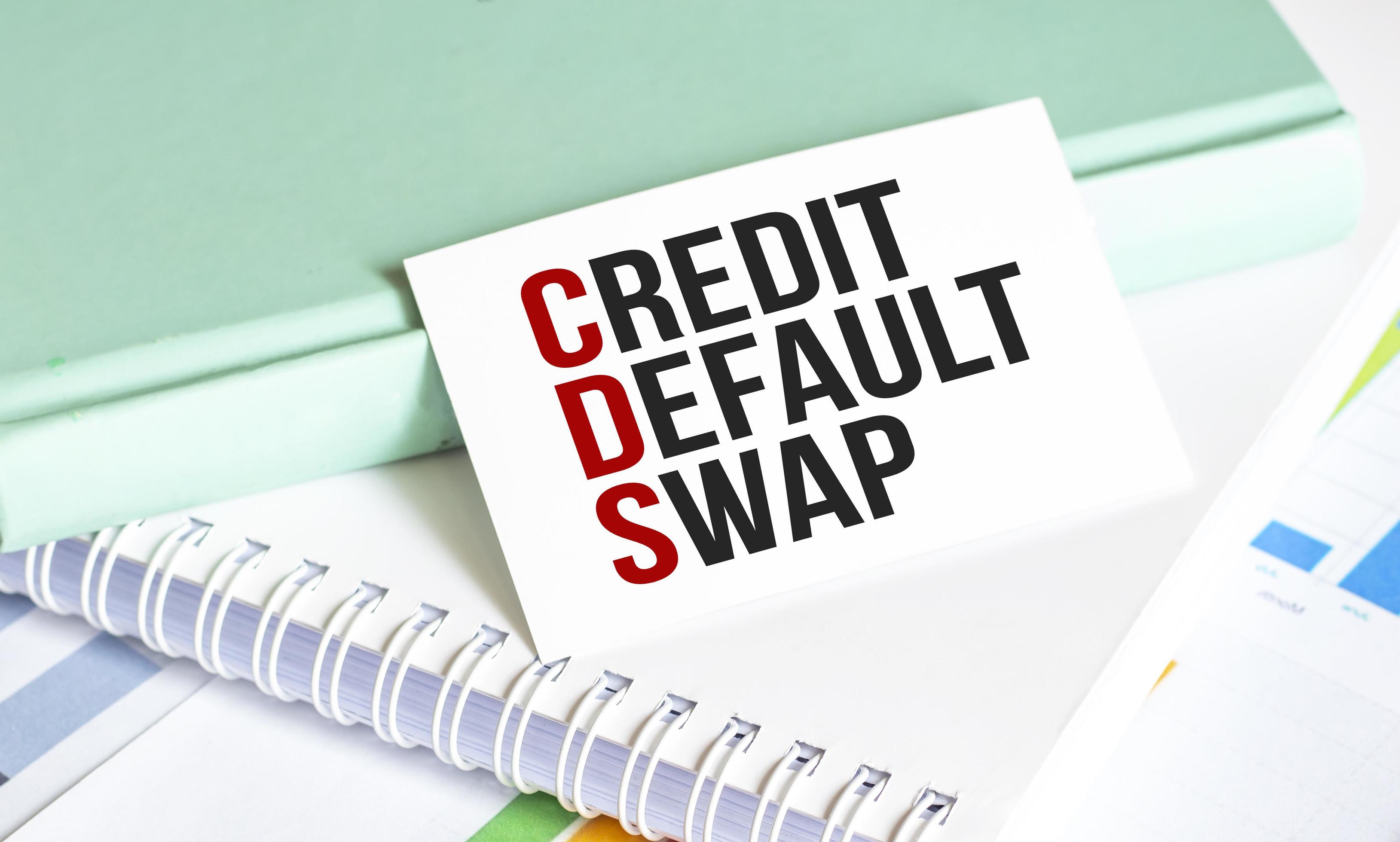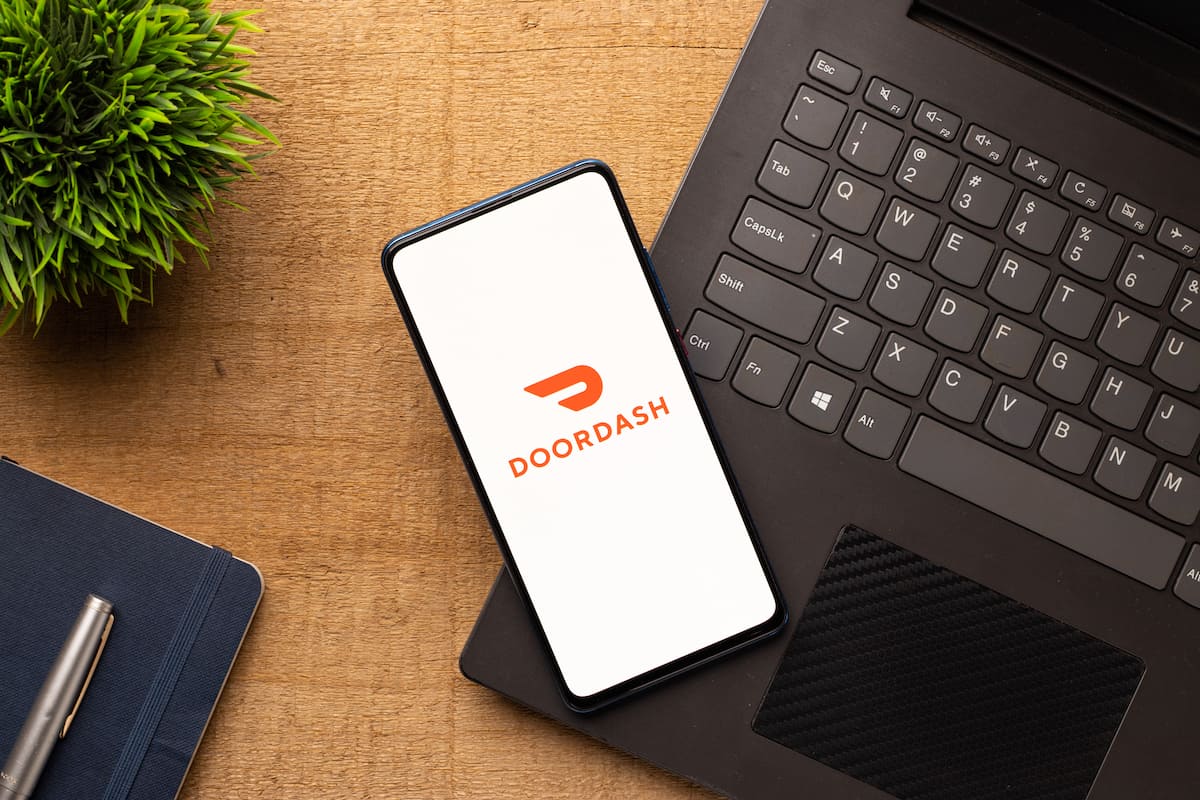

Finance
How To Make Money With Crowdfunding
Published: December 21, 2023
Learn how to make money with crowdfunding and finance your ventures. Launch successful campaigns and maximize your financial potential.
(Many of the links in this article redirect to a specific reviewed product. Your purchase of these products through affiliate links helps to generate commission for LiveWell, at no extra cost. Learn more)
Table of Contents
- Introduction
- Understanding Crowdfunding
- Choosing the Right Crowdfunding Platform
- Setting Up Your Crowdfunding Campaign
- Creating a Compelling Campaign Story
- Setting an Achievable Funding Goal
- Crafting Rewards and Incentives
- Promoting Your Campaign
- Engaging with Your Backers
- Managing and Fulfilling Rewards
- Tips for Success
- Conclusion
Introduction
Crowdfunding has revolutionized the way entrepreneurs, creators, and individuals can raise funds for their projects, ideas, businesses, and even personal ventures. By harnessing the power of the internet and social networks, crowdfunding platforms have empowered countless individuals to turn their dreams into reality.
In this article, we will explore the world of crowdfunding and how it can be a viable avenue for making money. Whether you have a passion project, a business idea, or a cause you want to support, crowdfunding offers a platform to connect with a wide audience of potential backers who are willing to support your venture.
But, how can you make money with crowdfunding? What are the key steps and strategies to launch a successful crowdfunding campaign? In this comprehensive guide, we will provide you with the knowledge and insights you need to maximize your chances of success.
We will delve into choosing the right crowdfunding platform, setting up your campaign, crafting a compelling story, and engaging with your backers. Furthermore, we will discuss how to set achievable funding goals, create enticing rewards and incentives, promote your campaign effectively, and manage and fulfill rewards.
Throughout this journey, we will provide you with valuable tips and recommendations to help you navigate the world of crowdfunding and increase your chances of reaching your funding goals. So, let’s dive in and explore the exciting possibilities that crowdfunding has to offer in the realm of making money.
Understanding Crowdfunding
Crowdfunding is a collective effort of individuals, also known as the “crowd,” who pool their money together to support a project or idea initiated by an individual or organization. It is a form of alternative finance that allows individuals to raise funds from a large number of people, typically through an online platform.
There are several different types of crowdfunding, including reward-based crowdfunding, donation-based crowdfunding, equity crowdfunding, and debt crowdfunding. Each type has its own unique characteristics and requirements.
In reward-based crowdfunding, backers contribute funds to a project in exchange for rewards or incentives. These rewards can range from a simple thank you note to a product sample or exclusive access to the finished product. This model is popular among entrepreneurs, artists, and creators who want to validate their ideas and generate pre-sales.
Donation-based crowdfunding, on the other hand, involves raising funds for charitable causes or personal needs. People share their stories and seek financial support from the crowd, who donate money out of goodwill or a personal connection to the cause.
In equity crowdfunding, investors receive shares in the company in exchange for their financial support. This type of crowdfunding is commonly used by startups and small businesses looking to raise capital and gain investors.
Debt crowdfunding, also known as peer-to-peer lending, involves borrowing money from individuals who expect a return on their investment in the form of interest payments over a specified period of time.
Regardless of the type of crowdfunding, the success of a campaign largely depends on the ability to engage and motivate potential backers. It is crucial to create a compelling campaign story, offer attractive rewards, and effectively promote the campaign to reach the target audience.
Crowdfunding platforms act as intermediaries between project creators and backers, providing a platform to showcase projects and facilitate financial transactions. Some popular crowdfunding platforms include Kickstarter, Indiegogo, GoFundMe, and SeedInvest.
Now that we have a better understanding of crowdfunding, let’s explore how to choose the right platform for your campaign and set it up for success.
Choosing the Right Crowdfunding Platform
When it comes to crowdfunding, choosing the right platform is crucial for the success of your campaign. With so many options available, it’s important to consider factors such as the type of project, target audience, fees, and platform features. Here are some key considerations to help you select the best crowdfunding platform:
- Type of Crowdfunding: Determine which type of crowdfunding best aligns with your project goals. If you are looking for reward-based crowdfunding, platforms like Kickstarter and Indiegogo are popular choices. For equity crowdfunding, platforms like SeedInvest or StartEngine may be more suitable.
- Project Category: Consider the categories and niches that the platform specializes in. Some platforms are known for certain categories such as technology, art, or social causes. Choose a platform that caters to your specific project niche to maximize your chances of attracting the right audience.
- Platform Reach: Evaluate the platform’s reach and user base. Look for platforms that have a large and active community of backers who are interested in supporting innovative projects. This will increase the visibility of your campaign and attract potential backers.
- Platform Features: Explore the features and tools offered by the crowdfunding platform. Look for features such as social sharing options, campaign analytics, and customizable campaign pages. These features can help you effectively promote your campaign and engage with backers.
- Fees and Costs: Review the fee structure of the platform. Crowdfunding platforms typically charge a percentage of the funds raised as a fee. Consider the fees in relation to your funding goal and the benefits offered by the platform. It’s also important to check if there are any additional fees, such as payment processing fees.
- Success Stories: Research successful projects that have been launched on the platform. Look for campaigns similar to yours and assess their level of success. This can give you an idea of the platform’s track record and whether it is a good fit for your project.
Take the time to thoroughly research and compare different crowdfunding platforms before making a decision. Consider reaching out to other project creators who have used the platforms you are interested in and ask for their feedback and experiences.
Remember, selecting the right crowdfunding platform is key to attracting the right audience, gaining visibility, and ultimately achieving your funding goals. So, choose wisely and get ready to launch your successful crowdfunding campaign!
Setting Up Your Crowdfunding Campaign
Once you have chosen the right crowdfunding platform for your project, it’s time to set up your campaign. A well-planned and organized campaign page can significantly increase your chances of success. Here are the key steps to set up your crowdfunding campaign:
- Create a Compelling Campaign Story: Your campaign story is at the heart of your crowdfunding campaign. Clearly communicate the purpose, vision, and impact of your project. Use storytelling techniques to connect with your audience on an emotional level and inspire them to become backers.
- Select Engaging Visuals: Invest in high-quality visuals, including images, videos, and graphics, that effectively showcase your project. Visual content captures attention and helps potential backers envision the end result of your project.
- Set an Achievable Funding Goal: Determine the funding amount you need to bring your project to life. Consider the costs involved, including production, marketing, and fulfillment. Set a realistic funding goal that is attainable within the timeframe of your campaign.
- Choose a Campaign Duration: Select the duration of your campaign, keeping in mind the attention span of potential backers. Shorter campaigns, typically 30-45 days, create a sense of urgency, while longer campaigns allow for more time to attract backers.
- Outline Clear Milestones: Break down your funding goals into clear milestones. This gives backers a sense of progress and demonstrates how their support will contribute to the project’s overall success. Clearly explain how you will use the funds raised to achieve these milestones.
- Create Compelling Rewards: Design a variety of enticing rewards and incentives for different backer levels. Offer unique experiences, exclusive merchandise, or early access to your product. Make sure the rewards are aligned with the spirit and purpose of your project.
- Write a Persuasive Call-to-Action: Use a strong call-to-action to encourage potential backers to support your project. Clearly state what you need from them, whether it’s backing your project or sharing it with their networks.
- Offer Social Proof: Include testimonials, endorsements, or any press coverage you have received to build credibility and trust. Social proof can help reassure potential backers that your project is worth supporting.
- Provide Regular Updates: Keep your backers informed and engaged throughout the campaign. Regularly post updates on the progress of your project, share behind-the-scenes content, and express gratitude for the support received.
Remember to optimize your campaign page with relevant keywords and phrases related to your project. This will help improve its visibility in search engine results and attract organic traffic to your campaign.
By following these steps and paying attention to every detail, you can set up an effective and compelling crowdfunding campaign that captivates potential backers and motivates them to support your project.
Creating a Compelling Campaign Story
A compelling campaign story is the backbone of a successful crowdfunding campaign. It captivates potential backers, elicits an emotional connection, and convinces them to support your project. Here are some key tips to create a compelling campaign story:
- Hook the Reader from the Start: Begin your story with a powerful hook that grabs the reader’s attention. Whether it’s a personal anecdote, a shocking statistic, or a thought-provoking question, make sure it immediately engages the reader.
- Share the Purpose and Vision: Clearly communicate the purpose and vision of your project. Explain why it matters, who it will benefit, and how it will make a positive impact. Paint a vivid picture of the difference your project can make in the world.
- Show Your Passion: Let your passion for the project shine through your words. Share your personal connection to the project and why it means so much to you. Authenticity and passion are contagious and can inspire others to join your cause.
- Use Storytelling Techniques: Craft your campaign story like a compelling narrative. Use storytelling techniques such as character development, conflict, and resolution to create an emotional connection with your audience. Show the journey of how your project came to be and the challenges you’ve overcome.
- Appeal to the Emotions: Tap into the emotions of your audience by highlighting the positive change and transformation your project will bring. Paint a picture of the joy, hope, or relief your project can provide and how it will enhance the lives of others.
- Connect with the Target Audience: Tailor your campaign story to resonate with your target audience. Understand their needs, desires, and values, and convey how your project aligns with them. Speak directly to their aspirations and show them how they can be a part of something meaningful.
- Keep it Concise and Engaging: While it’s important to provide enough detail, keep your story concise and engaging. Break up the text with subheadings, bullet points, and visuals to make it visually appealing and easy to digest.
- Showcase Social Proof: Incorporate testimonials, reviews, or endorsements from individuals who have already supported or benefited from your project. Social proof builds credibility and trust, showing potential backers that your project has value and is worthy of their support.
- End with a Strong Call-to-Action: Conclude your story with a clear and compelling call-to-action. Encourage readers to back your project, share it with their networks, or take any other desired action. Make it easy for them to get involved.
Remember, your campaign story is your opportunity to connect with potential backers on an emotional level and inspire them to take action. Craft a story that is authentic, compelling, and resonates with your target audience, and you’ll be well on your way to a successful crowdfunding campaign.
Setting an Achievable Funding Goal
Setting a realistic funding goal is crucial to the success of your crowdfunding campaign. It determines the amount of money you need to raise to bring your project to life. Here are some key considerations when setting an achievable funding goal:
- Evaluate Project Costs: Calculate the total expenses required to complete your project. Consider factors such as production costs, marketing expenses, packaging, shipping, and any additional fees. Take the time to research and get accurate estimates to ensure you have a clear understanding of the financial requirements.
- Be Transparent: Be transparent with your backers about how you will use the funds raised. Break down the expenses and provide a detailed budget outline to demonstrate that you have carefully considered the costs involved.
- Consider Platform Fees: Take into account the fees charged by the crowdfunding platform. Most platforms deduct a percentage of the funds raised as their service fee. Ensure you factor this into your funding goal to ensure you receive the desired amount to cover your project expenses.
- Assess Campaign Reach: Consider your campaign’s potential reach and the size of your target audience. If you have a small, niche audience, it may be more challenging to raise a large amount of funds. Similarly, if you have a well-established network and a wider reach, you may be able to aim for a higher funding goal.
- Set Realistic Expectations: Consider the average funding amounts of similar projects in your niche. Look at successful campaigns to get a sense of what is achievable. Setting an unrealistically high funding goal can deter potential backers who may think it’s too ambitious or unattainable.
- Create Stretch Goals: In addition to your main funding goal, consider setting stretch goals. These are additional funding targets that, if reached, unlock extra features, upgrades, or bonuses for your backers. Stretch goals can provide added motivation for backers to continue supporting your campaign even after your initial goal has been met.
- Calculate Minimum Viable Product: If your project involves developing a product or service, determine the minimum viable product (MVP) version. This is the basic version of your project that can be completed with the minimum necessary funds. Setting a funding goal based on the MVP allows you to launch and build upon your project, providing a foundation for future growth.
Remember, setting a funding goal that is too high can lead to disappointment and a failed campaign. On the other hand, setting a goal that is too low may not provide enough funds to successfully execute your project. Take the time to assess your financial needs, evaluate market trends, and ensure you set an achievable funding goal that allows you to deliver a quality project to your backers.
Crafting Rewards and Incentives
One of the key factors that can attract potential backers to your crowdfunding campaign is the rewards and incentives you offer. Rewards provide an opportunity to show appreciation to your backers and create an incentive for them to support your project. Here are some key tips for crafting appealing rewards and incentives:
- Variety of Reward Tiers: Create a range of reward tiers to cater to different budget levels. Offer rewards at various price points to accommodate a wide range of backers. This allows everyone to contribute, regardless of their financial capacity.
- Early Bird Specials: Offer exclusive rewards or discounts to early backers. This creates a sense of urgency and encourages supporters to pledge their support early on. Early bird specials can help generate momentum and attract more backers to your campaign.
- Limited and Exclusive Rewards: Create limited-edition rewards that are unique and exclusive to your campaign. This could include personalized items, behind-the-scenes experiences, or limited-run merchandise. Offering exclusive rewards adds value and encourages backers to pledge at higher levels.
- Extra Benefits for Higher Pledge Levels: Provide additional perks for backers who pledge at higher levels. This could include VIP access to events, special recognition, or personalized services. Make these perks compelling and tailored to the interests and needs of your target audience.
- Personalize Rewards: Consider offering personalized rewards that provide a unique connection with backers. This could include handwritten thank-you notes, custom messages, or personalized merchandise. Personalization adds a special touch and makes backers feel appreciated.
- Match Backer Interests: Tailor rewards to align with the interests and preferences of your target audience. Consider what would be valuable and meaningful to them. This could range from exclusive content, early access to new features, or opportunities to collaborate on the project.
- Update and Expand Rewards: Keep your rewards fresh and exciting by updating them throughout the campaign. Consider adding new rewards or stretch goals as incentives to encourage ongoing support and engagement from backers.
- Communicate Value: Clearly communicate the value and benefits of each reward. Explain how the rewards enhance the overall experience of the project or provide exclusive access to something special. Make sure backers understand what they will receive in exchange for their support.
- Set Realistic Delivery Timelines: Be realistic about the timeline for delivering rewards. Ensure you have the resources and capacity to fulfill the rewards within the committed timeframe. Over-promising and under-delivering can damage your reputation and credibility.
- Show Gratitude: Express sincere gratitude to your backers for their support, regardless of the pledge level. Regularly acknowledge and thank your backers throughout the campaign and even after it ends. This fosters goodwill and encourages them to continue supporting your project.
Remember, the rewards and incentives you offer should not only be appealing to backers but also aligned with the spirit of your project. Craft your rewards thoughtfully, provide unique value, and make your backers feel valued and appreciated. This will not only attract more support to your campaign but also cultivate a loyal community around your project.
Promoting Your Campaign
Promotion is key to the success of your crowdfunding campaign. It’s important to get the word out and reach as many potential backers as possible. Here are some effective strategies to promote your campaign:
- Utilize Social Media: Leverage the power of social media platforms to promote your campaign. Create engaging content, share updates, and interact with your audience on platforms such as Facebook, Instagram, Twitter, and LinkedIn. Use relevant hashtags and encourage your network to share your campaign with their followers.
- Tap into Your Network: Reach out to friends, family, colleagues, and acquaintances to spread the word about your campaign. Ask them to support and share your campaign with their networks. Personal connections can be powerful in generating initial support and momentum.
- Reach out to Influencers: Identify influencers or bloggers in your niche who have a large following and align with your project. Reach out to them, share your story, and ask if they would be willing to support or promote your campaign to their audience. Their endorsement can significantly increase your campaign’s visibility.
- Create Compelling Visual Content: Visual content is highly engaging and shareable. Create eye-catching images, videos, and graphics related to your campaign to catch the attention of potential backers. Share these visuals on social media, your campaign page, and other relevant platforms.
- Email Marketing: Build an email list of interested individuals prior to launching your campaign. Send out regular updates about your project, including the launch date, milestones reached, and special offers. Encourage your subscribers to support and share your campaign with their networks.
- Collaborate with Complementary Projects: Identify projects or campaigns that complement your own and reach out to the project creators. Explore opportunities for cross-promotion to tap into each other’s networks and expand the reach of both campaigns.
- Run a PR Campaign: Craft a compelling press release and send it to relevant media outlets, bloggers, and journalists. Highlight the unique aspects of your project and explain why it is newsworthy. Secure media coverage can significantly boost your campaign’s visibility and credibility.
- Participate in Online Communities and Forums: Join relevant online communities, forums, and discussion boards related to your project’s niche. Engage in conversations, provide valuable insights, and share your campaign when appropriate. Be mindful of the community rules and avoid overly self-promotional posts.
- Host Live Events or Webinars: Organize live events, webinars, or Q&A sessions to engage with potential backers directly. Use these platforms to share your campaign story, answer questions, and provide more information about your project. Consider partnering with influencers or experts in your field to increase attendance and credibility.
- Offer Referral Incentives: Encourage your existing backers to refer others to your campaign by offering referral incentives, such as exclusive rewards, discounts, or recognition. People are more likely to share something when they feel they are getting something in return.
Remember to personalize and tailor your promotional efforts to resonate with your target audience. Be genuine, transparent, and engaging in your communications. Building a community around your campaign is key, so actively engage with your supporters, respond to their questions and comments, and express your gratitude for their support.
With a strategic and consistent promotional strategy, you can increase the visibility of your campaign, attract more backers, and ultimately reach or even exceed your funding goal.
Engaging with Your Backers
Engaging with your backers is crucial to building a strong and loyal community around your crowdfunding campaign. Keeping your backers informed, involved, and excited about your project can lead to continued support and even attract new backers. Here are some effective ways to engage with your backers:
- Regular Campaign Updates: Provide regular updates on the progress of your campaign. Share milestones reached, new features or rewards added, and any exciting developments. Updates keep backers informed and involved, giving them a sense of being part of the journey.
- Respond to Comments and Messages: Be responsive and attentive to comments and messages from your backers. Take the time to answer their questions, address concerns, and express gratitude for their support. Prompt and personalized responses demonstrate your commitment and appreciation.
- Create a Backer-Only Community: Establish a backer-only community or forum where backers can connect with each other and with you. This provides a space for backers to share their experiences, ask questions, and engage in discussions related to your project. Actively participate in the community to foster a sense of belonging and build relationships.
- Offer Exclusive Behind-the-Scenes Content: Provide behind-the-scenes glimpses into the progress of your project. Share photos, videos, or updates that show the process, challenges, and successes. This gives backers a feeling of exclusivity and being part of something special.
- Ask for Feedback and Input: Involve your backers by seeking their feedback and suggestions on important aspects of your project. This could include features, design choices, or stretch goals. Showing that you value their input helps them feel invested in the project and fosters a sense of ownership.
- Recognize and Thank Your Backers: Express gratitude to your backers publicly and privately. Give shoutouts, mention them on social media, or include their names in project updates. Consider creating a dedicated section on your campaign page to recognize your top backers. Appreciation goes a long way in nurturing strong relationships.
- Host Live Q&A Sessions: Organize live Q&A sessions, webinars, or livestreams where backers can ask you questions directly. This interactive format allows for real-time engagement and helps clarify any doubts or concerns your backers may have.
- Provide Timely and Transparent Communication: Keep your backers informed about any changes, setbacks, or updates regarding your project. Be transparent about challenges you face and how you plan to overcome them. Trust and open communication build credibility and maintain backers’ confidence in your project.
- Share Backer Success Stories: Highlight and celebrate the stories of backers who have had positive experiences or received benefits from your project. This not only adds social proof but also creates a sense of community and inspiration among your backers.
- Offer Special Backer Thank-You Rewards: Consider offering exclusive thank-you rewards to backers who have been particularly supportive or have gone above and beyond in promoting your campaign. This can be a gesture of appreciation for their outstanding contribution.
Remember, engaging with your backers is not a one-time activity. It’s an ongoing process throughout your campaign and even beyond. By establishing a strong sense of community, fostering open communication, and showing genuine appreciation for your backers, you can build lasting relationships and create a loyal support base for your project.
Managing and Fulfilling Rewards
Once your crowdfunding campaign reaches its funding goal, it’s time to focus on managing and fulfilling the rewards promised to your backers. Effective management and fulfillment are crucial for maintaining the trust and satisfaction of your supporters. Here are some key steps to ensure a smooth rewards fulfillment process:
- Organize Backer Information: Keep track of your backers’ information, including their names, addresses, and reward selections. This can be done through a spreadsheet or a dedicated backer management tool. Having organized data makes it easier to process and ship the rewards.
- Stay in Communication: Provide regular updates to your backers regarding the progress of your project and the status of rewards fulfillment. Be transparent about any delays or unforeseen issues that may arise. Clear and consistent communication helps manage expectations and keeps backers informed and engaged.
- Quality Control: Ensure that the rewards you deliver meet the promised standards. Perform quality checks to ensure that the products are in good condition and meet your backers’ expectations. This is crucial for maintaining your reputation and ensuring the satisfaction of your supporters.
- Packaging and Shipping: Package your rewards securely and consider adding a personal touch, such as a handwritten note or custom packaging. Choose reliable shipping methods to ensure that the rewards are delivered safely to your backers. Provide tracking information so that backers can monitor the progress of their shipments.
- Address Potential Issues: Address any issues or concerns raised by backers promptly and professionally. If a backer reports a missing or damaged reward, respond quickly and provide a satisfactory resolution, such as a replacement or refund. Maintaining good customer service is essential for building trust and loyalty.
- Consider Fulfillment Partners: If your campaign involves a significant number of backers or complex reward fulfillment, consider working with fulfillment partners. These companies specialize in packaging, shipping, and customer service, relieving you of the logistical burden and ensuring a professional and efficient fulfillment process.
- Provide Post-Fulfillment Support: After rewards have been delivered, continue to provide support and address any post-fulfillment inquiries. This could include answering questions, providing additional information, or troubleshooting any issues that may arise with the rewards.
- Express Gratitude: Once rewards have been fulfilled, express your gratitude to your backers for their support and patience. Send personalized thank-you emails or messages to acknowledge their contribution and let them know that their support made your project a reality.
- Solicit Feedback: Encourage your backers to provide feedback on their rewards and overall experience. This feedback can help you improve future projects and identify areas for enhancement in your fulfillment process. Use the feedback to strengthen your relationship with your backers and enhance customer satisfaction.
- Learn from the Experience: Reflect on the rewards fulfillment process and identify areas where improvements can be made. Analyze the challenges faced and the lessons learned to refine your approach in future campaigns.
Remember, fulfilling rewards is a critical part of the crowdfunding journey. By staying organized, communicating effectively, and taking care of the details, you can ensure a positive and rewarding experience for both you and your backers.
Tips for Success
Launching a successful crowdfunding campaign requires careful planning, strategic execution, and a proactive approach. Here are some valuable tips to help you maximize your chances of success:
- Prepare Before Launch: Build anticipation by creating buzz before your campaign goes live. Establish a strong online presence, validate your idea, and gather a supportive network of friends, family, and potential backers.
- Tell a Compelling Story: Craft a compelling campaign story that resonates with your target audience. Use storytelling techniques to connect with their emotions and inspire them to become backers.
- Set Realistic Goals: Set achievable funding goals and break them down into clear milestones. This gives backers a sense of progress and shows how their support contributes to the overall success of your project.
- Invest in High-Quality Visuals: Use visually appealing images, videos, and graphics to showcase your project. High-quality visuals capture attention and help potential backers visualize the end result.
- Engage with Your Backers: Actively engage with your backers, respond to their comments and messages, and make them feel connected to your project. Regularly update them on your progress and express sincere gratitude for their support.
- Utilize Social Media and Networking: Leverage the power of social media platforms to promote your campaign. Engage with influencers, collaborate with complementary projects, and utilize online communities to expand your reach.
- Offer Attractive Rewards and Incentives: Craft enticing rewards at various price points to appeal to a wide range of backers. Consider offering exclusive rewards, early bird specials, and personalized experiences to create additional incentives.
- Communicate Transparently: Be open and transparent with your backers throughout the campaign. Share updates, communicate any changes or setbacks, and address concerns promptly. Trust and transparency are key to maintaining backer confidence.
- Follow Through on Your Promises: Ensure that you fulfill the rewards as promised and provide post-fulfillment support. Deliver high-quality products or services, address any issues promptly, and maintain good customer service standards.
- Express Gratitude and Stay connected: Continuously express your gratitude and appreciation to your backers, even after the campaign ends. Stay connected with them through newsletters, social media, or events, and keep them informed about future developments.
Remember, running a crowdfunding campaign is a learning experience, and it may not guarantee success on the first attempt. Learn from each campaign, gather feedback, and adapt your strategy for future endeavors. With dedication, perseverance, and these tips in mind, you can improve your chances of achieving your funding goals and bringing your project to life.
Conclusion
Crowdfunding offers a unique and accessible avenue for individuals to turn their dreams into reality, whether it’s launching a business, funding a creative project, supporting a cause, or pursuing personal ventures. By leveraging the power of the crowd and the reach of the internet, crowdfunding has democratized the funding process, enabling anyone with a compelling idea to attract financial support.
In this comprehensive guide, we have explored the different aspects of running a successful crowdfunding campaign. From understanding the various types of crowdfunding to choosing the right platform, crafting a compelling story, setting achievable goals, and engaging with backers, we have provided insights and tips to help you navigate the crowdfunding landscape.
We emphasized the importance of creating a compelling campaign story that resonates with your target audience and communicates the purpose and vision of your project. We highlighted the significance of setting an achievable funding goal and crafting enticing rewards and incentives to motivate backers to support your campaign.
Furthermore, we discussed the strategies for promoting your campaign, engaging with your backers, managing and fulfilling rewards, and revealed valuable tips for success. Throughout the process, clear communication, transparency, gratitude, and a commitment to delivering high-quality projects and experiences were recurring themes.
Remember, launching and running a crowdfunding campaign is not without its challenges, but with careful planning, perseverance, and a genuine connection with your backers, you can increase your chances of reaching your funding goals and turning your vision into reality.
So, go forth, align your passion and creativity with the power of crowdfunding, and embark on the exciting journey of bringing your dreams to life.














